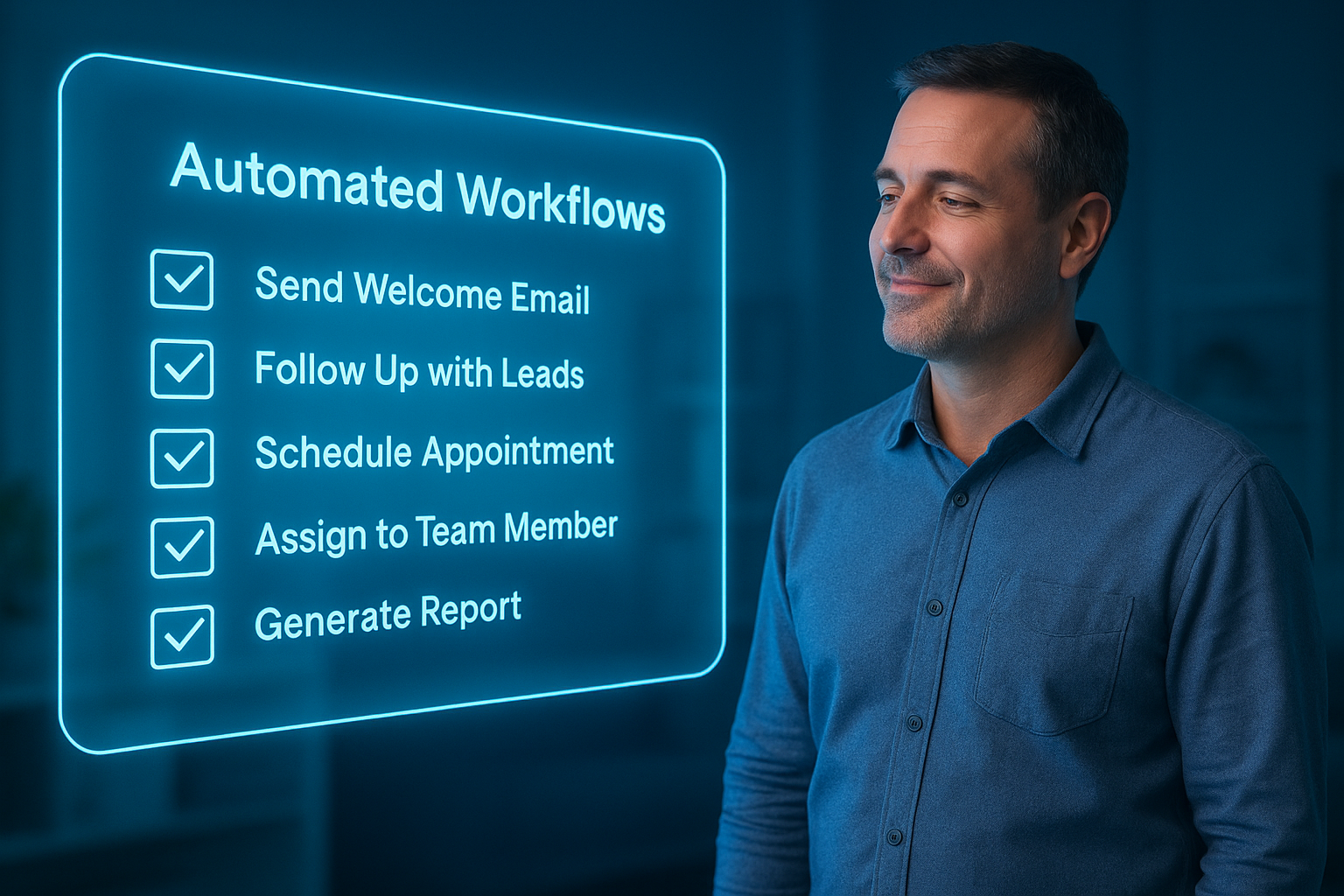The Systems-First Scaling Strategy: How to Grow Without Chaos
A Smarter Way to Scale—Built on Systems, Not Just Sales

Most business owners hit a tipping point where growth starts to feel less like success—and more like stress.
The leads are coming in. The revenue’s going up. But so are the mistakes, delays, customer complaints, and late-night hours.
That’s not a marketing problem. That’s a systems problem.
Scaling before you systemize is how you go from ‘booked out’ to burned out.
This blog outlines a smarter approach: a systems-first scaling strategy that helps you grow with confidence—without adding chaos.
What Is a Systems-First Approach?
It means designing your business infrastructure before you try to grow fast.
Instead of focusing solely on client acquisition, you zoom out and assess your capacity to deliver consistently. It’s about future-proofing your operations so they support, not sabotage, your next level of growth.
You begin by asking questions like:
- How do we deliver consistently at scale?
- What tasks fall apart when volume increases?
- What can be automated, delegated, or documented?
Check out Why Working ON Your Business is the Key to Scaling to learn more about the mindset shift from technician to architect.
This systems-first mentality is how scalable brands like Calendly and ConvertKit avoid breakdowns during growth spurts—and how service providers with small teams operate at enterprise-level capacity.
Why Growth Feels Chaotic Without Systems
When systems are missing, growth doesn’t free you—it buries you.
Every new client feels like reinventing the wheel. You’re hiring just to stay afloat, but without SOPs or infrastructure, onboarding new help feels like another burden.
The more clients you land, the more time you spend correcting mistakes, responding to fires, or filling in for gaps that a solid process could’ve prevented. You become the safety net for every weak spot in the business.
That’s not sustainable—and it’s the reason many owners stall out or burn out.
A systems-first strategy flips the script: you build stability first so growth doesn’t break your business.
The Three Foundations of Systems-First Growth
1. Client Experience Systems
Your client journey must be predictable, repeatable, and high-quality—regardless of who’s delivering it or how busy you are. This includes automated welcome sequences, clearly outlined onboarding steps, standardized delivery checklists, client portals, and built-in feedback loops.
These systems not only improve the client experience—they reduce back-and-forth, prevent confusion, and allow you to exceed expectations at scale. Whether it’s sending a pre-call checklist or triggering automated review requests, client experience systems ensure consistency becomes your brand.
2. Internal Operations
Internal systems are what keep your business running behind the scenes. This includes SOPs for recurring tasks, documented workflows, and project templates for common deliverables. Tools like Notion, ClickUp, or GoHighLevel can be used to assign tasks, track deadlines, and ensure each team member knows exactly what to do and when.
Instead of relying on memory or 1:1 conversations, internal systems create a centralized operating rhythm. As a result, your team can make decisions without waiting on you—and you can step away without worrying the business will pause.
3. Visibility + Metrics
Guesswork is the enemy of scale. Without clear data, you can’t prioritize, optimize, or lead with confidence. This is why visibility systems matter.
Dashboards built in Google Data Studio, GoHighLevel, or similar tools help track KPIs like lead-to-sale conversion rates, campaign ROI, average client lifetime value, and fulfillment times.
These numbers tell you where the bottlenecks are and what systems need refining. You gain foresight instead of hindsight—and that’s the difference between reactive survival and strategic scaling.
Real Example: How LoudRumor Scaled Without Chaos
LoudRumor, a well-known marketing agency that helps fitness studios grow, is a prime example of systems-first scaling. Instead of growing their team as they onboarded more clients, they doubled down on building better systems. The team at LoudRumor implemented automation through GoHighLevel for lead management and onboarding, structured their SOPs inside Notion, and templated all recurring deliverables.
As a result, they were able to double their monthly recurring revenue while keeping their team lean. According to founder Mike Arce, the key wasn’t more people—it was cleaner processes. With streamlined systems in place, team members were able to focus on strategy instead of logistics, and client satisfaction increased as a result.
What changed? The business wasn’t dependent on memory or hustle anymore. The infrastructure was there to support growth—and that’s what made it scalable.
How to Start Building a Systems-First Foundation
If you’re still working reactively, don’t panic. Here’s how to start applying systems-first thinking to your growth:
1. Map Your Delivery Process
Outline every step from the moment a client signs until the project is complete. Look at what’s manual, what’s unclear, and what’s missing altogether.
2. Identify the Bottlenecks
Where do you experience slowdowns, miscommunications, or delays? These friction points are your signal that a system or SOP is needed.
3. Automate the Repetitive
Set up workflows in your CRM or task manager to eliminate busywork. This includes automating follow-up emails, status updates, recurring tasks, and reminders. Zapier, GHL, and built-in triggers can handle most of this without added tools.
4. Create One SOP Per Week
Don’t wait until you have time to “build the system.” Instead, document one standard procedure each week. At the end of a quarter, you’ll have a full internal playbook.
What Systems-First Growth Feels Like
It feels like freedom.
Instead of onboarding clients from memory, you send a link and the process runs itself. Instead of waking up in the middle of the night remembering a task, your dashboard reminds you. Instead of micromanaging your team, you manage results.
Systems let you scale with clarity, not just courage.
Hiring becomes easier. Time off becomes realistic. And growth becomes sustainable.
Final Takeaway
Hustle might get you started—but systems are what keep you going.
Systems-first scaling is how you build a business that doesn’t fall apart when it finally takes off.
Don’t wait for chaos to force you into systems. Build them now—so your business can grow without grinding you down.
Next Steps
Want help designing the systems that support sustainable growth? Download our Business Growth Guide or schedule a free strategy call to build your scaling roadmap—without the stress.
More Marketing Tips, Tricks & Tools










